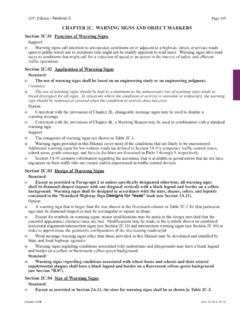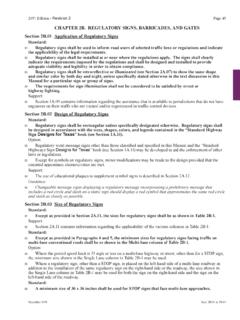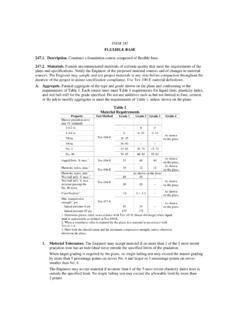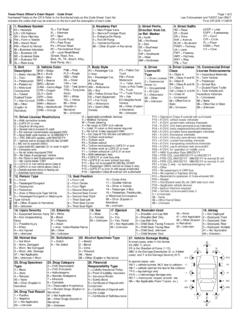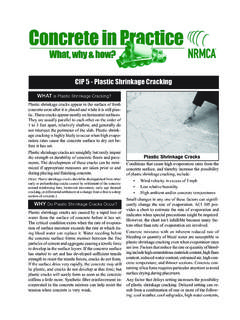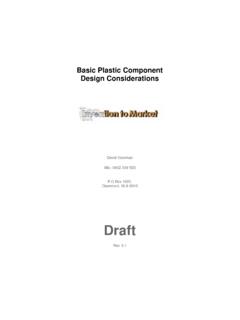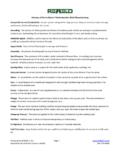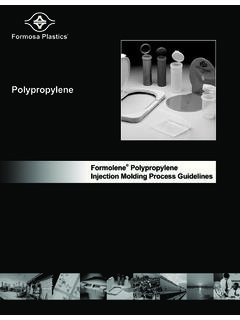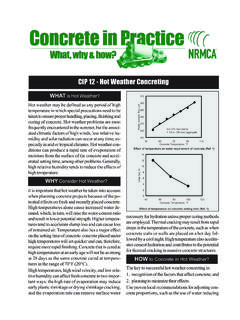Transcription of DETERMINING THE BAR LINEAR SHRINKAGE OF SOILS
1 DETERMINING THE BAR LINEAR SHRINKAGE OF SOILS TXDOT DESIGNATION: TEX-107-E CONSTRUCTION DIVISION 1 3 LAST REVIEWED: SEPTEMBER 2014 Test Procedure for DETERMINING THE BAR LINEAR SHRINKAGE OF SOILS TxDOT Designation: Tex-107-E Effective Date: August 1999 1. SCOPE This method allows the user to determine bar LINEAR SHRINKAGE of SOILS . It shows how to prepare the sample, take measurements, and calculate the LINEAR SHRINKAGE . The values given in parentheses (if provided) are not standard and may not be exact mathematical conversions. Use each system of units separately. Combining values from the two systems may result in nonconformance with the standard. 2. APPARATUS Porcelain evaporating dish, approximately 115 140 mm ( in.) in diameter. Flexible spatula, with a blade approximately 102 mm (4 in.) long 19 mm ( in.) wide. Straight edge, stainless steel SHRINKAGE gauge.
2 Balance, Class G1 in accordance with Tex-901-K, minimum capacity of 200 g. Drying oven, maintained at 110 5 C (230 9 F). Grooving tool, made of non-absorbent, non-reactive material, as shown in Tex-104-E. Bar LINEAR SHRINKAGE mold, stainless steel or aluminum, with section 19 19 127 mm ( 5 in.) Number 20 scale (optional). 3. MATERIALS Petroleum jelly. Distilled or deionized water. DETERMINING THE BAR LINEAR SHRINKAGE OF SOILS TXDOT DESIGNATION: TEX-107-E CONSTRUCTION DIVISION 2 3 LAST REVIEWED: SEPTEMBER 2014 4. PREPARING SAMPLE The bar LINEAR SHRINKAGE test is made on soil binder. The moist soil sample remaining after the completion of Tex-104-E may be used to form the soil bar. If there is not a sufficient amount of soil remaining from the liquid limit test, prepare a soil sample according to Tex-101-E, Part I, and mix uniformly with water to reach the consistency as outlined in the procedure of this test.
3 5. PROCEDURE Place enough material in the evaporating dish to fill the SHRINKAGE mold. Add water, realizing that a considerable amount of manipulation is required to mix plastic SOILS . Note 1 It is very important to mix the soil and water thoroughly and uniformly. Test wet soil for the proper molding consistency by shaping the sample into a smooth layer about 13 mm ( in.) thick on the bottom of the dish and making a groove with the grooving tool. If the material immediately flows of its own accord and just closes the groove at the bottom, the sample is ready for molding. If a slight jarring is required to close the groove or if the soil is obviously too wet, add more water or dry soil and remix the sample. Grease the inside walls of the bar LINEAR SHRINKAGE mold with a thin layer of petroleum jelly to prevent the adhesion of the soil to the mold. Shape the soil bar by placing a small portion of the wet soil evenly into the mold and gently jarring the mold to cause the soil to flow and to assist in the removal of entrapped air bubbles.
4 When the mold has been completely filled, remove the excess soil from the bar by means of the straightedge and smooth the surface level with the top of the mold. Air dry the soil bar at room temperature until color changes slightly, place in 110 5 C (230 9 F) oven and dry to a constant mass. Remove specimen from oven, allow to cool, and measure the length of the bar. DETERMINING THE BAR LINEAR SHRINKAGE OF SOILS TXDOT DESIGNATION: TEX-107-E CONSTRUCTION DIVISION 3 3 LAST REVIEWED: SEPTEMBER 2014 6. CALCULATIONS The LINEAR SHRINKAGE can be obtained as a direct reading from the stainless steel SHRINKAGE gauge or calculated as below: If measured in mm (in.): LSLLLWDW= 100() Where: LW = length of the wet soil bar, 127 mm (5 in.) LD = length of the dry soil bar, mm (in.) If measured in percent: LSLLWD= Where: LW = length of the wet soil bar, 100% LD = length of the dry soil bar, %. 7. REPORT Report to the nearest whole percent.
5


